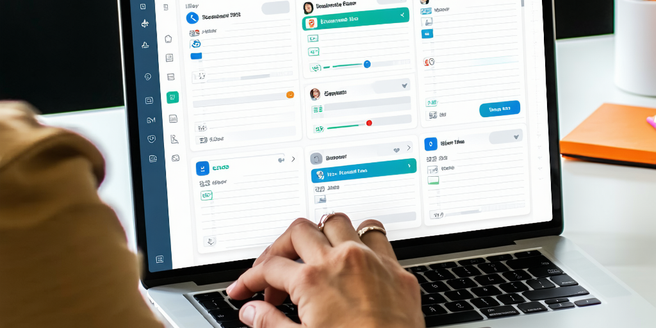
Understanding the Importance of Time Management
| Category | Significance | Examples |
| Personal | Improves focus | Daily planners |
| Professional | Enhances productivity | Project schedules |
| Academic | Boosts learning efficiency | Study timetables |
| Startup | Facilitates growth | Product launches |
| Healthcare | Effective patient management | Appointment slots |
| Retail | Efficient stock management | Inventory trackers |
Evaluating Different Types of Time Management Tools
When it comes to evaluating time management tools, there are several categories to consider. Digital tools, such as apps and software, offer features like reminders, alerts, and virtual calendars that help individuals manage their time more effectively. These digital solutions often integrate with other applications, providing a seamless experience. Traditional tools, including physical planners and to-do lists, rely on handwritten entries but provide a tactile experience. The choice of tool largely depends on personal preference, lifestyle, and specific needs. While digital tools are more suitable for tech-savvy individuals, those who prefer the simplicity might favor traditional methods. Ultimately, experimenting with different tools is essential to discover what enhances productivity and ensures that time is managed efficiently.
Popular Digital Tools for Time Management
Nowadays, digital tools dominate the landscape of time management. Apps like Todoist and Trello are popular for organizing tasks and projects effectively. They provide functionalities like categorization, deadline settings, and prioritization that aid in swift task management. In addition, many of these apps offer collaboration features, allowing teams to work together seamlessly. Google Calendar remains a powerful utility for scheduling and reminders, synchronizable across devices. For those who prefer managing tasks on the go, mobile apps such as Evernote or Asana allow recording ideas and delegating tasks even while in transit. These tools not only streamline schedules but also integrate various features tailored towards personal and professional use, making them indispensable in today’s fast-paced world.
Traditional Time Management Methods That Still Work
In the age of digital solutions, traditional time management methods continue to hold their ground. Many individuals still rely on paper-based planners that provide a tactile and visually straightforward way to manage their time. Handwritten task lists offer a personalized approach, accompanied by the satisfaction of visual checks upon completion. Moreover, the physical act of writing can enhance memory and retention, making tasks easier to recall. The Pomodoro technique, employing intervals and breaks, is a strategy that encourages focused work sessions. Scheduling weekly reviews with pen and paper allows for reflection on accomplishments and adjustments for upcoming tasks. These methods, though free of digital distractions, demand discipline and consistency to yield productive results.
Integrating Time Management Tools into Daily Routines
To make the most of time management tools, integrating them seamlessly into your daily routine is crucial. Start by setting realistic goals and choosing tools that align with your lifestyle. Technology can provide a wide array of options to fit any type of schedule. Gradually introduce these tools by incorporating them into regular activities such as planning your day or setting reminders for important tasks. Customizing notifications to suit your preferences helps in maintaining focus without feeling overwhelmed. Building a habit around using these tools enhances their effectiveness. Remember, the key is consistency; the more naturally these tools become part of your routine, the more smoothly they will improve your time management skills.
Customizing Your Time Management Toolset
Customization is key when assembling a time management toolset that truly meets your needs. Begin by assessing your specific challenges and tasks that require timely attention. Don’t forget to consider the learning curve of each tool to ensure ease of use. Choose tools with adjustable features, like togglable alerts in digital planners, or customizable labels in task managers, that allow personalization. It’s crucial to periodically review and update your toolset to accommodate any changes in your routine or goals. Physical planners offering modular inserts can adapt to different daily demands. Pair digital and traditional tools to address various situations, providing a balanced approach. By tailoring your toolset, these solutions effectively address your distinct workflow and preferences, ensuring maximal productivity and satisfaction in managing your time.
Benefits of Using Multiple Time Management Tools
Utilizing a combination of time management tools can unlock multiple benefits. Integrating various solutions like digital apps, physical planners, and reminders provides a comprehensive structure for managing diverse tasks effectively. Additionally, a thoughtful balance of these tools can enhance personal accountability and focus. Digital tools offer on-the-go scheduling, while physical mediums such as planners foster detailed note-taking. This diverse range of tools can cater to different preferences and working styles. A varied toolset ensures adaptability, allowing users to leverage strengths correlate to different tasks. This multilateral approach promotes flexibility, reduces monotony, and optimizes efficiency. Its holistic nature caters to complex schedules and increases the likelihood of achieving quite ambitious or multifaceted goals through concerted effort.
How to Choose the Right Time Management Tool
Selecting the right time management tool begins with identifying your specific needs. Assess whether your tasks require digital versatility or if traditional simplicity suffices. For those immersed in technology, apps integrating with other applications might streamline processes. It’s crucial to evaluate whether a tool can adapt to changes in your schedule over time. It is important to consider how the tool will fit into your daily routine. Conversely, if physical engagement aids concentration, notebooks could be more effective. Experimentation is vital—start with trial versions or flexible subscriptions. Evaluate the ease of use, features, and long-term adaptability of the tool. Personal preferences, the complexity of tasks, and the style of work-life synchronization play crucial roles in finalizing the best-fit tool.
Overcoming Challenges with Time Management Tools
Encountering obstacles with time management tools is not uncommon. Initial challenges may include the steep learning curve associated with new software or the underutilization of full functionalities. Sometimes, these tools may feel overwhelming at first, leading to frustration. It is important to approach these challenges with a positive mindset. Patience and practice are crucial in navigating these early hurdles. Distracting notifications, rather than reminders, can disrupt workflow. To overcome these issues, invest time in comprehensive tutorials and guides to adopt best practices. Gradually tweak settings to strike a balance between reminders and disturbances. Ensure the tool aligns with goals and expectations, making adjustments as necessary. Persistence and adaptability are key in mastering these tools—embracing user feedback for continual enhancements.
Future Trends in Time Management Technology
The future of time management technology is innovative and promising. Emerging trends suggest the integration of artificial intelligence to anticipate tasks and optimize scheduling dynamically. With advancements accelerating, the possibilities seem endless in transforming our daily routines. This fast-paced evolution demands that users adapt and learn new tools to maintain productivity. Voice recognition tools aim to offer seamless hands-free experience in creating task lists. Smartwatches and wearable devices are expected to become pivotal in monitoring and managing time effortlessly with biometric data insights to prevent burnout. Furthermore, cloud-based ecosystems allow cross-platform synchronization, ensuring continuity and accessibility. These advancements herald a significant shift towards more efficient, accurate, and personalized time management solutions fit for evolving work dynamics.

